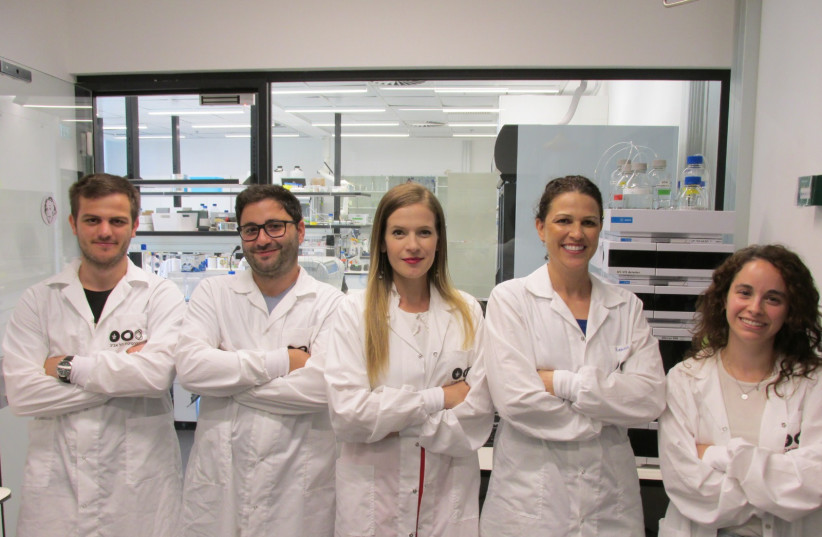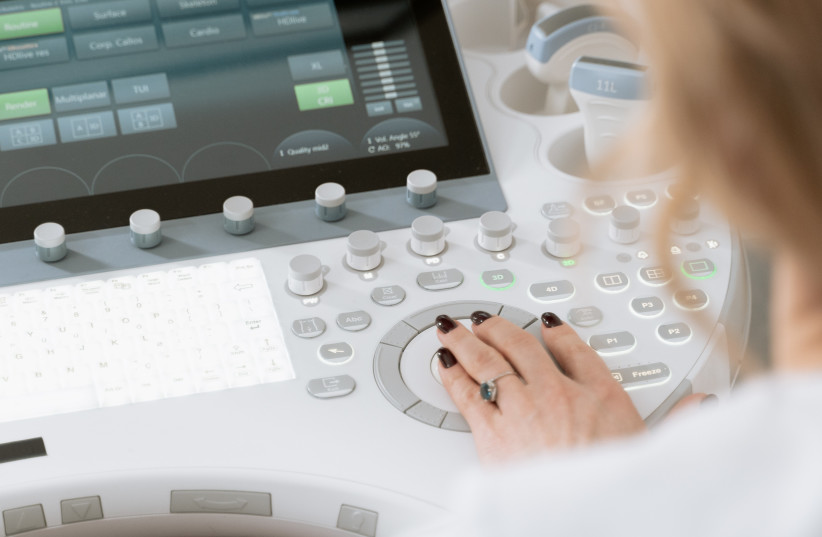Non-invasive cancer removal made possible with new Israeli research
A new non-invasive technology using low-frequency nanobubble-enhanced ultrasound mechanotherapy has shown success in animal models.

The Tel Aviv University research team behind the new study on non-invasive cancer treatment.
(photo credit: TEL AVIV UNIVERSITY)
A combination of low-frequency ultrasound and injected nanobubbles may work to remove malignant tumors in a non-invasive way, as observed in animal models.
The new, non-invasive technology was developed by Tel Aviv University (TAU) researchers and published in the journal Nanoscale under the title “Low-frequency nanobubble-enhanced ultrasound mechanotherapy for noninvasive cancer surgery.”
The nanobubbles and ultrasound waves cause the bubbles concentrated in the cancerous tumor to explode. The treatment was performed using safe, low-pressure levels and focused only on the area of the tumor, which avoids damage to healthy tissues and avoids off-target toxicity – the term used to refer to the effect of a drug binding to proteins or other molecules in the body other than those for which the drug was meant to bind, which can cause potentially harmful side effects.
The study was conducted under the leadership of doctoral student Mike Bismuth from the lab of Dr. Tali Ilovitsh at TAU’s department of biomedical engineering, in collaboration with Dr. Dov Hershkovitz of the pathology department. Prof. Agata Exner from Case Western Reserve University in Cleveland also participated in the study.
“Our new technology makes it possible, in a relatively simple way, to inject nanobubbles into the bloodstream, which then congregate in the area of the cancerous tumor,” noted Ilovitsh. “After that, using a low-frequency ultrasound, we explode the nanobubbles and thereby the tumor.”

The researchers explain that today, the most common method used to treat cancer is to remove the tumor surgically, in combination with complementary treatments such as chemotherapy and immunotherapy.
Advantages and disadvantages of therapeutic ultrasound treatment
Using therapeutic ultrasound to destroy the cancerous tumor is a non-invasive alternative to surgery that has both advantages and disadvantages. On the one hand, it allows for localized and focused treatment; the use of high-intensity ultrasound can produce thermal or mechanical effects by delivering powerful acoustic energy to a focal point with high spatial-temporal precision. This method has been used to effectively treat solid tumors deep within in the body. It also makes it possible to treat patients who are unfit for tumor-resection surgery.
The disadvantage, however, is that the heat and high intensity of the ultrasound waves may damage the tissues near the tumor.
In the current study, Ilovitsh and her team worked on overcoming this problem. In the experiment on an animal model, the researchers were able to destroy the tumor by injecting nanobubbles into the bloodstream instead of into the tumor itself, which has been the practice until now – in combination with low-frequency ultrasound waves.
“The combination of nanobubbles and low-frequency ultrasound waves provides a more specific targeting of the area of the tumor and reduces off-target toxicity,” explained Ilovitsh. “Applying the low frequency to the nanobubbles causes their extreme swelling and explosion, even at low pressures. This makes it possible to perform the mechanical destruction of the tumors at low-pressure thresholds.
“Our method has the advantages of ultrasound in that it is safe, cost-effective and clinically available; in addition, the use of nanobubbles facilitates the targeting of tumors because they can be observed with the help of ultrasound imaging.”
She added that the use of low-frequency ultrasound also increases the depth of penetration, minimizes distortion and attenuation and enlarges the focal point.
“This can help in the treatment of tumors that are located deep with the body and facilitate the treatment of larger tumor volumes. The experiment was conducted in a breast-cancer tumor mouse model, but it is likely that the treatment will also be effective against other types of tumors in animals and, in the future, also in humans.”
Keren Primor Cohen, chief executive officer of TAU’s tech-transfer company Ramot, explained: “We applied for several patents to protect this technology and its application. We believe in the commercial potential of this breakthrough technology in cancer treatment and are in contact with several leading companies in Israel and abroad to promote it.”
